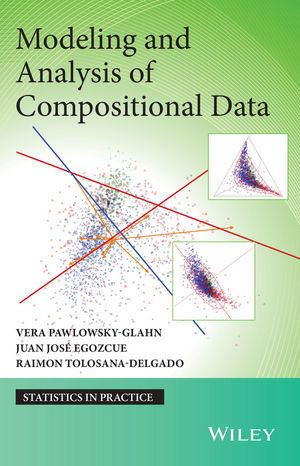In statistics, compositional data are quantitative descriptions of the parts of some whole, conveying exclusively relative information.
This definition, given by John Aitchison (1986) has several consequences:
A compositional data point, or composition for short, can be represented by a positive real vector with as many parts as considered. Sometimes, if the total amount is fixed and known, one component of the vector can be omitted.As compositions only carry relative information, the only information is given by the ratios between components. Consequently, a composition multiplied by any positive constant contains the same information as the former. Therefore, proportional positive vectors are equivalent when considered as compositions.As usual in mathematics, equivalent classes are represented by some element of the class, called a representative. Thus, equivalent compositions can be represented by positive vectors whose components add to a given constant κ . The vector operation assigning the constant sum representative is called closure and is denoted by C [ ⋅ ] :where D is the number of parts (components) and [ ⋅ ] denotes a row vector.
Compositional data can be represented by constant sum real vectors with positive components, and this vectors span a simplex, defined asThis is the reason why S D is considered to be the sample space of compositional data. The positive constant κ is arbitrary. Frequent values for κ are 1 (per unit), 100 (percent, %), 1000, 106 (ppm), 109 (ppb), ...
In statistics, compositional data is frequently considered to be data in which each data point is a D-tuple of nonnegative numbers whose sum is 1. Typically each of the D components xi of each data point [x1, ..., xD] says what proportion (or "percentage") of a statistical unit falls into the ith category in a list of D categories. Very often ternary plots are used in analysis of compositional data to represent a three part composition.An alternative nomenclature for compositional analysis is simplicial analysis, motivated by the concept of simplicial sets.Remarks on the definition of the simplex:
In mathematical frameworks, the superscript of S D , accounting for the number of parts, is often changed to D − 1, describing the dimension.The components of the vector are assumed to be positive. However, in some definitions of the simplex, non-negative components are admitted. Here null components are avoided, because ratios between components of which some are zero are meaningless.
